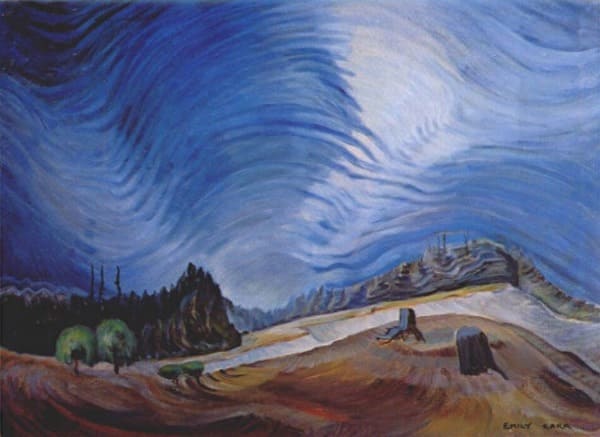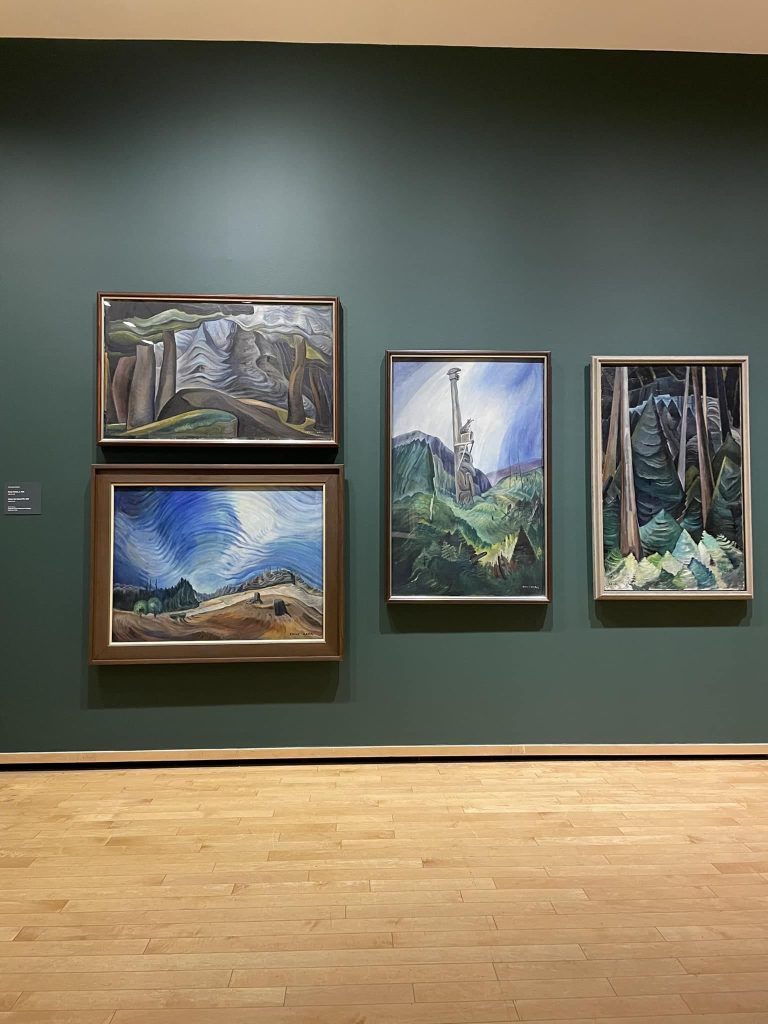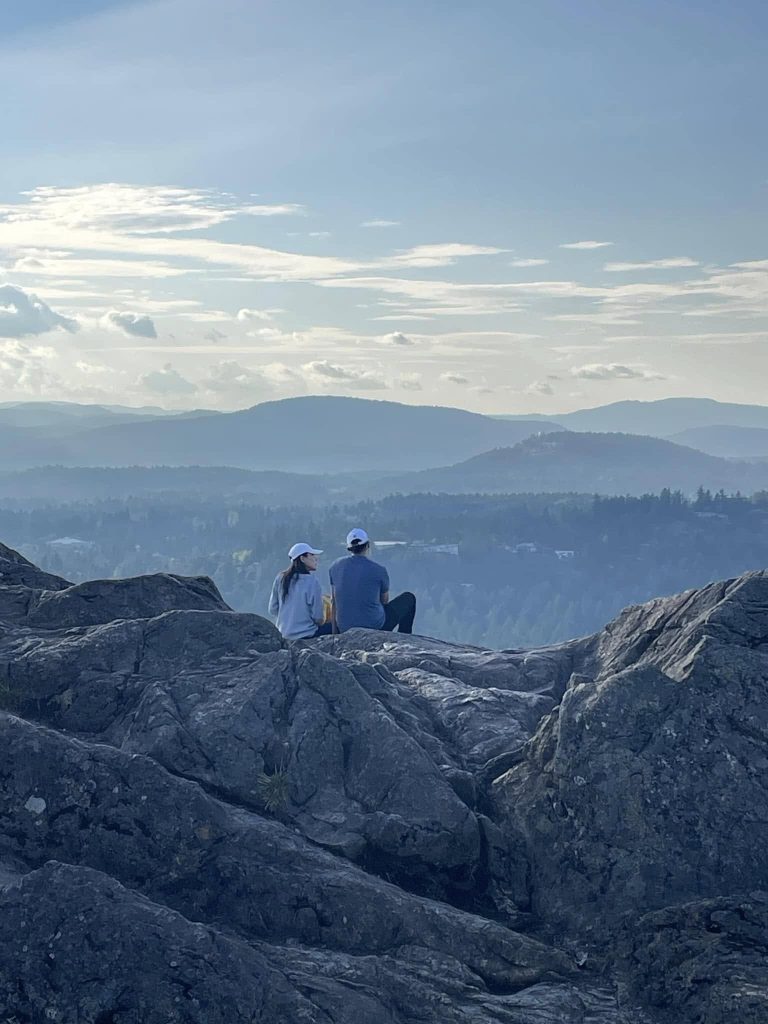
Above the gravel pit” Emily Carr
Emily Carr’s – famous Canadian artist from Victoria, British Columbia – last painting, captures the sweeping skies and textured, root-strewn landscapes of Mount Douglas near Victoria. Painted in 1942, it reflects her mature style and spiritual connection to British Columbia’s wilderness. Now at the Vancouver Art Gallery, the work embodies Carr’s Post-Impressionist influences and enduring reverence for the West Coast’s forests, and Indigenous heritage.
Why do you put the most beautiful painting at the bottom of the wall? Wasn’t there enough space in the whole gallery?!!!
“Above the gravel pit” was inspired by the views of “our” mt. Douglas in Victoria. I wrote about it some time ago. My friend took me to a small hike and I was so impressed with the views!
“In 1942, Emily Carr claimed to have had a vision while visiting a friend in Vancouver. The vision inspired her to return immediately to Mount Douglas Park where she felt the “forest had something to tell her”. There, for a few weeks in August of that year, she painted her last works which were both mystical and enchanting” (PKOLS park guide).
“Above the Gravel Pit” is Carr’s last painting shortly before she died at the age of 73.
Inspired by her daily walks near the mountain, Carr sought to convey the “wide, open sky with lots of movement,” connecting it to the gravel-strewn foreground with swirling roots and stumps. The painting reflects her mature style and her spiritual reverence for British Columbia’s landscapes, merging Van Gogh-inspired skies with the raw textures of well-recognised Canadian logged terrain.
It’s now exhibited in Vancouver Art Gallery. “In her journal Emily Carr describes this painting as “a skyscape with roots and gravel pits. I am striving for a wide, open sky with lots of movement, which is taken down into dried greens in the foreground and connected by roots and stumps to sky. My desire is to have it free and jubilant, not crucified into one spot, static. The colour of the brilliantly lighted sky will contrast with the black, white and tawny earth.” In her last years Emily Carr made series of compositions that were inspired by landscapes and seascapes near Victoria—such as in Albert Head and Esquimalt Lagoon in Colwood, and in Metchosin, Langford, Goldstream Park and Mt Douglas” (Art Canada Institute).


***
Emily Carr is one of the Canadian’s most cherished artists and writers, capturing the raw beauty of the West Coast. She is so dear to people from Victoria, Vancouver Island, because she was born here. By the way in 1871—the year British Columbia joined Canada.
Influenced by Post-Impressionism and Fauvism—transformed British Columbia’s forests and Indigenous totem poles into living, breathing entities. Works like Big Raven (1931) and Indian Church (1929) merged modernist innovation with a reverence for First Nations cultures. However her depictions have since been critiqued through post-colonial lenses. Fact: the Indigenous peoples allowed her onto their lands—in fact, she was the first artist they ever permitted.
Carr also faced harsh criticism from male contemporaries who believed women had no place in the art world. For days at a time, she would disappear into the forest, pulling a cart loaded with canvases and paints behind her. She painted en plein air, while the very artists who accused her of ‘primitive style’ worked from memory in their studios.